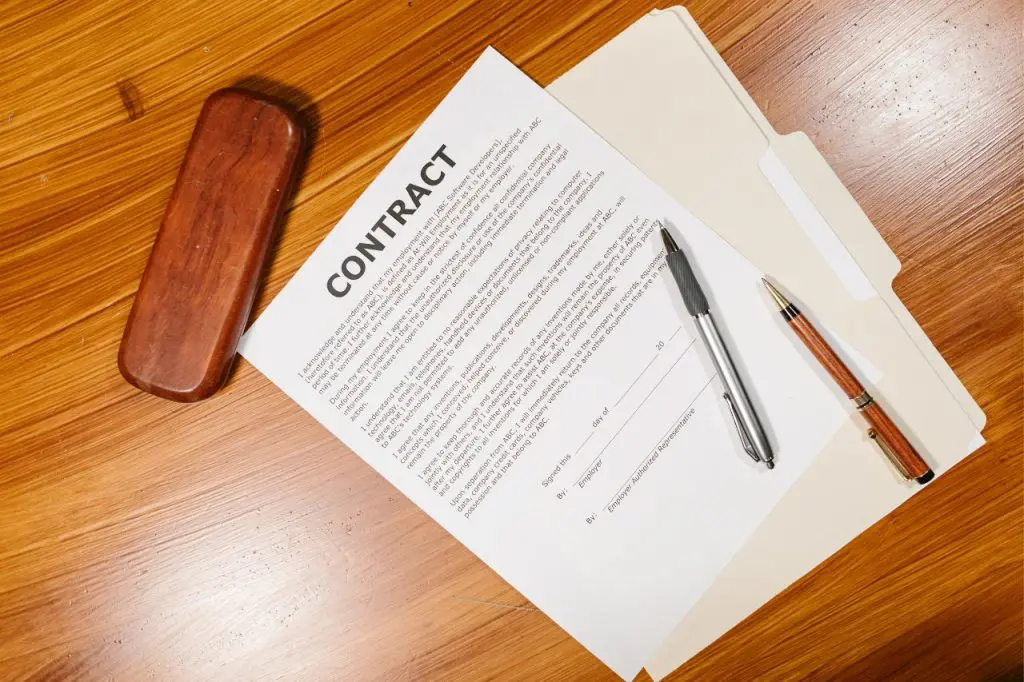Contracts are legally binding agreements that are essential for any organization. For instance, when finalizing the recruitment process, you use employment contracts.
Lease contracts are necessary when renting a commercial space. It’s vital to have a process to stay on top of the terms and conditions and maintain compliance. That’s where contract management comes in.
Understanding the different contract phases can better protect you from liabilities. It’s an assurance that all agreements are favorable to all parties. Let’s dive into the stages of contract management to equip you with helpful information.
Table of Contents
3 Phases of Contract Lifecycle Management
Whenever you enter into contract, you will encounter these three phases. Understanding each one gives you an idea of your responsibilities.
1. Pre-Execution
In this stage, businesses determine their contracting needs and begin to develop a plan for how the parties will execute the terms. The pre-execution phase typically includes three key steps:
- Request
- Drafting and Creation
- Negotiation
Request
Request is gathering the necessary information to create a contract that meets the needs of both parties. This will include
- Procurement of goods or services
- Scope of the obligations, commitment, and other special conditions
- Price and delivery dates
- Pre-termination, renewal dates, and termination
Once you have gathered all the information, you can move on to the next stage.
Drafting and creation
A good contract manager with a legal background is of great value in drafting and creation. This will ensure that all key terms are included and that there are no ambiguities or loopholes. Using correct legal terminology and clear language is highly recommended as you write the terms and conditions you have collected in the previous stage.
Negotiation
Negotiation occurs if the parties don’t agree on the contract’s terms. The two sides will have to reconcile their differences and agree on mutually beneficial terms. Both sides will need to consider their own interests and the interests of their stakeholders. This phase should ensure the satisfaction of all parties involved in the contract.

2. Execution
The second phase of contract management is the finalization of the contract, and signatures are attached.
During this phase, the contract is signed by both parties and any final payments are made. The authorized representative must sign the contract for it to be legally executed. They can sign it on paper or use electronic signatures. Using eSignatures is the most convenient way to sign contracts, increasing the turnaround time to 80%.
Finalization happens once the contract is inked physically or virtually. The contract is then enforced, and both parties are legally bound to uphold their end of the deal.
3: Post-Execution
After a contract has been executed, it’s crucial to not just forget about it and move on to the next task. The post-execution or third phase of contract management is vital. You need to monitor the contract to ensure both parties meet all the agreed-upon terms.
This stage includes:
- Obligations and commitments
- Auditing and reports
- Renewals, amendments, and termination
Obligations and commitment
This is where the actual work or project in the contract begins. Both parties must demonstrate that they are committed to meeting the terms of the contract. For example, a project manager or other designated individual is assigned to oversee the work being done. This stage can last months or even years, depending on the length of the contract.
Auditing and reporting
It’s important to have auditing and reporting to ensure that all terms and conditions have been met. The process includes:
- Reviewing the contract documents to identify any areas of non-compliance
- Collecting documentation to substantiate your findings
- Preparing a report detailing your findings and recommendations
- Presenting your report to the appropriate stakeholders for review and approval.
Regular auditing and reporting ensure that your contracts are up-to-date and compliant with all applicable laws and regulations. This transparency helps you build stronger relationships with vendors and suppliers.
Renewals, amendments, and terminations
After a contract has been executed, it’s not the end of the relationship between the involved parties. The contract still needs to be managed throughout its entire lifetime.
- Renewals are often necessary to keep the contract valid. Depending on the terms of the original agreement, one or both parties may need to agree to renew it.
- Amendments can be made to improve or update the contract without invalidating it entirely. These might be slight changes, such as an updated date or contact information, or more substantial updates that reflect amendments in circumstances or objectives.
- Terminations can occur for several reasons, including breach of contract, project completion, or term expiration. If termination is necessary, it’s essential to follow the proper procedures to ensure that all parties are released from their obligations under the agreement.
The post-execution stage is crucial to maintaining a healthy relationship between two parties. By understanding the different types of post-execution actions and how they can impact the agreement, both parties can avoid surprises and maintain a productive partnership.
How Fill Can Help Your Business Succeed in Each Contract Phase
As a business owner, you know that contracts are essential to any successful business venture. But did you know that contract management software can help your business succeed at each phase of the contracting process? That’s where Fill comes in.
Fill is a cloud-based contract management software that helps companies to streamline the contracting process from start to finish. With it, you can manage your contracts in acentral location, making it easy to find and track important information.
Here’s how Fill can contribute to each phase of contract management:
Pre-execution
Our customizable templates enable you to create contracts that meet your specific needs quickly. Fill also provides a secure and encrypted environment for storing and sharing agreements so that you can collaborate with others when drafting the contract.
Execution
With Fill, you can set the signing order for eSignature requests. This makes tracking and managing signature approvals easy. Fill’s automatic notifications and real-time audit trails also prevent delays and ensure that all parties have signed off on the agreement. Better yet, add biometric signer ID verification, which ensures that all signers are who they say they are.
Post-execution
Fill makes it easy to edit contracts and send the latest versions to the intended signatories. You can ensure that your arrangements are always accurate and up-to-date to avoid legal repercussions.
The best part? Fill is HIPAA compliant, which makes it an excellent option for covered entities in the healthcare industry.
Explore Fill today and see how you can use it to improve your contract management flow.
What’s more, it’s free to sign up. Request a demo for quick deployment into your existing enterprise apps.




